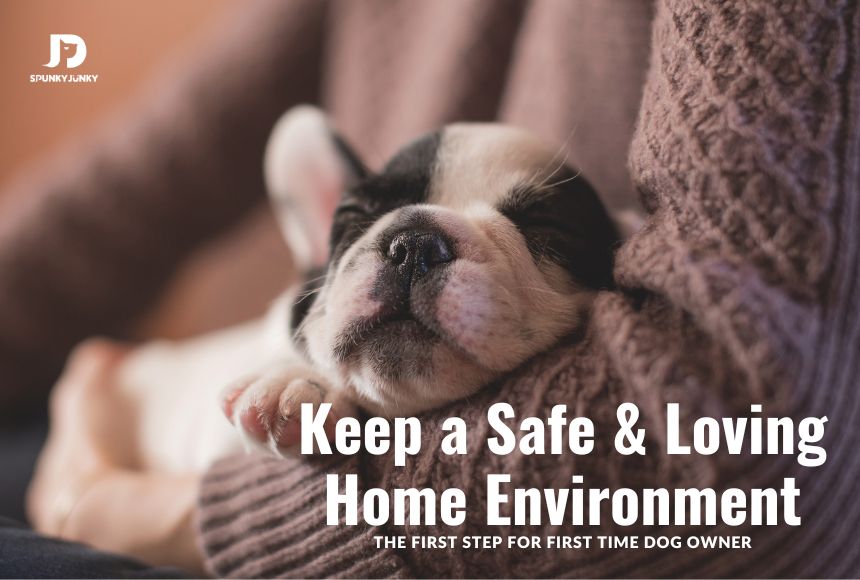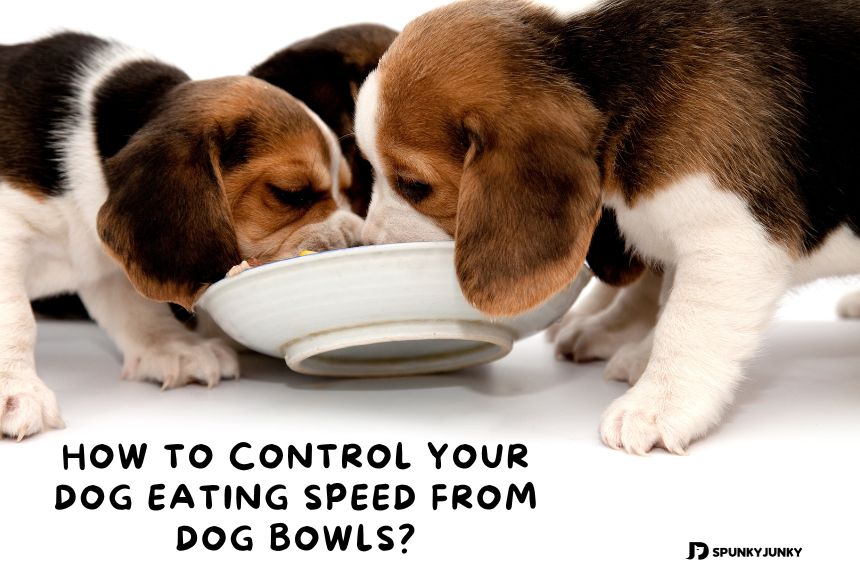Welcome, new dog parents! As I've been on this fun adventure before, I know what it's like to be excited and a little worried about bringing home a furry bundle of joy. I still remember the day I got my first dog; it was a turning point in my life. So I have to share what I know and have learned to help you smoothly get through the early steps of owning a dog.
In this piece, we'll discuss the first thing you should do after getting your pup: create a pup-friendly environment for them. Without further delay, let's get started!

Why Said I It's the First Step for a First-Time Dog Owner?
You must be wondering why I can say categorically that "creating a safe and loving home environment" is the first step in dog ownership. Don't worry, let me tell you slowly.
Dogs, especially pups, are naturally curious and may have a lot of energy as they explore their surroundings. Creating a safe environment can reduce possible dangers like poisonous plants, chemicals, electrical cords, and small things that could hurt if eaten. Ensuring they are physically safe is essential for their well-being and prevents accidents and injuries.
You may not be aware that dogs are social animals. They usually can do best when they feel loved, cared for, and like they belong. Giving them a loving home helps them feel safe, reduces their nervousness, and helps them form a strong bond with their furry friend. Dogs need emotional support, care, and company for their lives to be happy and full.
And there is an important thing you need to realize: good behavior starts at home. When dogs feel safe and loved, they are more likely to act in good ways, like obeying, making friends, and having good manners. On the other hand, being in a chaotic or dangerous place can cause stress, fear, and bad behaviors like aggression or chewing things up.
Dogs are also very sensitive to how their human partners feel and act. Giving your dog a safe and loving home builds trust and improves your relationship with him. This trust is the basis for successful training, open communication, and a good relationship.
Your dog's health and wellness will improve if they live in a safe place. This includes making sure there is a nice place to sleep, keeping the temperature just right, and making sure there is enough light. Accidents, stress-related illnesses, and the spread of diseases or parasites are less likely to happen in a safe and clean living area.
A loving and safe environment can ultimately lead to a longer life for dogs. I believe, there is nothing better for us pawrents than to have a dog that is healthier and stays with us longer.
By knowing how important it is to make a safe and loving home environment, first time dog owners can put their best friend's health and happiness first and give them the care and environment they need.

So, What Should You Do?
Now you guys understand why you should keep a safe and loving environment for dogs, there are several essential steps you can take to make your home a safe and caring place for your new dog:
● Protect dogs from dangerous items:
1. Find and get rid of things that could be dangerous, like poisonous plants, chemicals, small items, and electrical cords.
2. Keep medicines, cleaning products, and other dangerous items in a safe place.
3. Use baby gates or crate training to control who can get into restricted areas.
● Provide a comfortable living space:
1. Choose a bed or box that is the right size, safe, and comfortable for your pet.
2. Show your dog where they will sleep, and make the area cozy and inviting.
3. Keep the temperature in the right range and ensure enough natural and artificial lighting.
● Establish a routine:
1. Make a regular eating plan and watch how much you eat to keep a healthy diet.
2. Depending on the breed and age of your dog, set aside regular time for exercise and mental activity.
3. Play with your dog and give him interesting toys to keep him busy and happy.
● Create a loving atmosphere:
1. It would be best if you slowly exposed your dog to new people, animals, and places.
2. Spend time with your dog, giving them care, affection, and company.
3. Use methods like positive reinforcement and training based on rewards to get people to behave well.
● Ensure safety outside the home:
1. Train your dog to walk on a leash and use the right walking gear to keep them safe when you go out.
2. Choose places to play and exercise outside that are safe and secure.
3. Be aware of possible dangers in the area, like mean cars or dogs, and take the necessary steps.
● Be prepared for emergencies:
1. Make a first-aid kit for your dog with the things it needs.
2. Keep important phone numbers handy, like those for your vet and the animal poison control center.
3. Learn about common health issues and what to do in case of one.
By doing these things, first time dog owners can make sure their pet friends have a safe and loving place to live. Remember that creating this kind of environment is an ongoing process that constantly needs care, attention, and learning.
Additional Information:
** Common Houseplants That Are Toxic to Puppies
The peace lily (Spathiphyllum) is a popular indoor plant that is dangerous for dogs. Peace lilies are popular houseplants because their leaves and white flowers look lovely. But if a dog eats a peace lily, it can make them drool, have trouble swallowing, throw up, and, in some cases, even die from kidney failure.
Except for peace lily, which is also known to be poisonous to humans, it is important to know if other plants in your home could also be dangerous to dogs. Other popular but dangerous houseplants are:
● Philodendron: This plant has calcium oxalate crystals, which can irritate the mouth, make you drool a lot, and make it hard to swallow.
● Pothos: also called "Devil's Ivy," has calcium oxalate crystals like philodendron and can cause the same effects if eaten.
● Dieffenbachia: Dieffenbachia is another plant with calcium oxalate crystals that can make your mouth and throat sore, drool, and swell up.
● Dracaena: Some types of dracaena, like Dracaena fragrans (Corn Plant), can hurt dogs. If you eat it, you might throw up, drool, and lose your hunger.
● Aloe Vera: Aloe vera is often used to treat illnesses but can be dangerous for dogs. If you eat it, it could upset your stomach and make you have diarrhea.
These are just a few examples of plants that dogs should avoid. To ensure your home is safe for your dog, you should research and look for potential dangers. If you are worried about certain plants, talk to your vet or look at a complete list of dangerous plants for dogs.
What Will I Share Next
Happy times are always short; I hope what I've shared can help you. Don't forget to create a safe and loving home environment for your puppies. Go for it, newbie!
And in the upcoming articles, I will continue to share my experience in dog ownership. These topics will include training tips, pet care, and socialization. These guidebooks will help you better understand the joys and challenges of owning a dog.
If there's anything you want to know more about, feel free to leave it in the comments.






